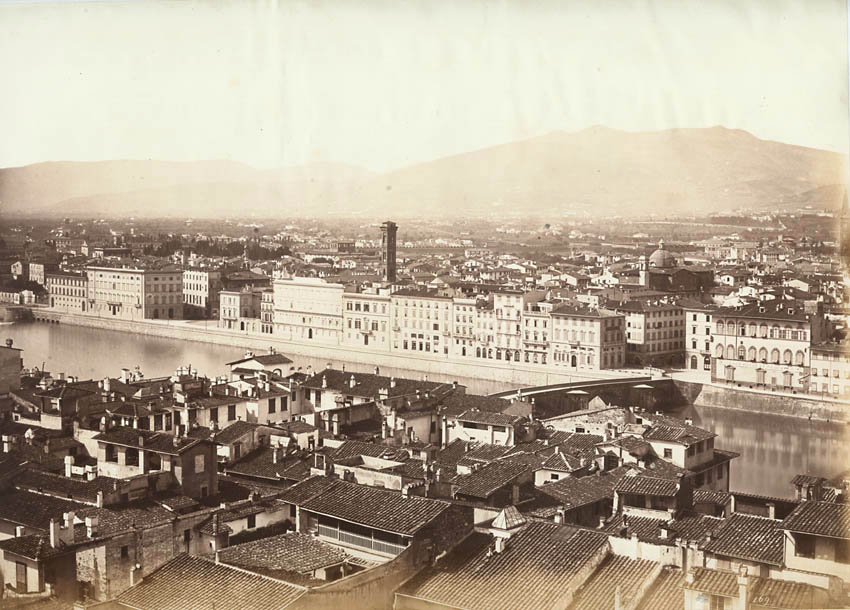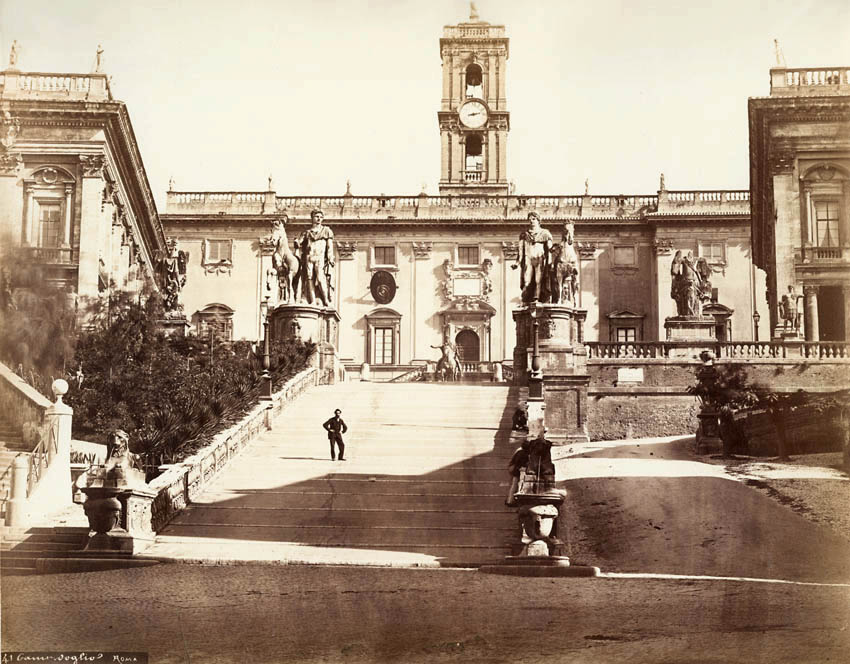The emergence of photography in the 19th century opened the world's eyes to many things, not the least of which was the classic architecture that had previously required people to travel in order to truly appreciate it. Otherwise, there were only artist renderings of the great, faraway structures of antiquity. Photography's breakthrough challenged its practitioners to frame the world's architecture with a powerful new realism, conveying scale and grandeur, tone and texture with all the techniques at their command, delivering powerful images to an audience eager to experience the exotic.
This exhibit spotlights some of the 19th-century's finest views of Italy's architectural treasure, from the countless Roman ruins to Renaissance structures in all their timelessness. Panoramic views locate urban and monumental building against the hills of Italy's undulant landscape--as in the photos of Verona, Naples or Pompeii in the shadow of Mt. Vesuvius--while more tightly framed studies often place human figures in relation to the great columnar and temple ruins to indicate the impressive scale of so much ancient architecture.
Indeed, the closely observed views of Pompeii or the arches of the Roman Forum by the likes of Gustave Le Gray and James Anderson bring the viewer into an almost tactile relationship with the weathered columns and ornate facades, as these mid-century photographers explored the limits of the available chemistry--whether on wet collodion glass plates or even waxed paper negatives--to deliver detailed exposures in available light.

Jean Walther -- Doges Palace and St. Mark's Basilica, Venice
At the same time, these images brought more than entertainment and diversion to their audience; they also brought instructive insight and scholarship to architectural academicism, exploring the Roman fusion of Greek and Etruscan elements, the innovative Roman use of the arch, its reliance on concrete (a first-century invention), and its mix of Doric, Corinthian, and Ionic columns in freely creative ways. The photos of such iconic structures as Trajan's column, set majestically in a great square, or the ruined temple in Naples, by such Italian photographers as Tomasso Cuccioni or Giorgio Sommer, are intensely observed studies of place and form, although both photographers also often left in the everyday details of their contemporary existence, juxtaposing the modern with the ancient.
So are the angled views of such monolithic places of worship as the temples of Vespasian, Castor and Pollux, or Fortuna Virils, by which touring photographers such as James Anderson conveyed the mass and age of these ruins with careful compositions that describe two sides of these great buildings. Similarly, the power of superb Renaissance architecture--the Doge's Palace or the Ponte Rialto in Venice, or the Baptistery in Florence--is lovingly rendered in luminous black and white (or at least sepia) tones that seem almost to convey the colors of the day, by native photographers such as Leopold Alinari.
If anything, the pictures in this exhibition draw a wonderful connection between Roman architecture and the Renaissance emphasis on sublime symmetry and proportion, which draws from and builds upon the Roman innovations and forms--arches, columns, lintels, pilasters--with a new sense of harmony in its hemispheric domes and decorative restraint. The true beauty and aspiration of this rich and incomparable architectural tradition may be impossible to experience anywhere but in person, and yet these remarkable photographs achieve an almost miraculous immediacy.
Exhibited and Sold By
Contemporary Works / Vintage Works, Ltd.
258 Inverness Circle
Chalfont, Pennsylvania 18914 USA
Contact Alex Novak and Marthe Smith
Email info@vintageworks.net
Phone +1-215-518-6962
Call for an Appointment














Share This